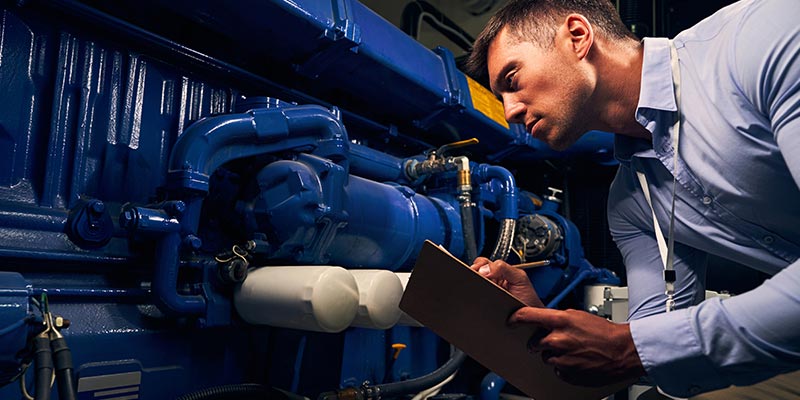
Requirements of ISO 45001: What you need?
The ISO 45001 standard is the world’s leading standard for occupational healt...
Read MoreUsing corrective action steps, the ISO 14001 standard helps organisations improve their environmental performance. It helps implement an environmental management system (EMS) that reduces waste and promotes the effective use of resources. The EMS also increases compliance by providing a set of regulations that organisations can adopt. Compliance is not merely maintaining minimum legal standards but also allowing companies to integrate industry-specific best practices while maintaining their environmental performance.
The framework outlined in ISO 14001 contains 10 clauses that are known as the requirements of ISO 14001. By strictly following the steps defined in each clause, companies can reap benefits, including reduced costs, improved company reputation, and customer acquisition. In this article, the requirements of ISO 14001 are broken down to help the reader understand the underlying theme of the standard. Stay with the ISO Council to learn about the documents required for ISO 14001 certification.
The latest revision of ISO 14001 was published in 2015. The standard outlines recommendations for an environmental management system with an added emphasis on sustainability. ISO 14001 is broken into ten clauses that provide a framework for an EMS.
The first three clauses are preliminary and introduce a user to important definitions. The first clause talks about the scope of the EMS.
Scope statement used to indicate the expected results, constraints, assumptions and other important factors under the EMS.
It also explains the EMS boundaries, establishes each team member’s work responsibility and procedures that must be followed during the EMS life-cycle.
The second clause contains normative references, which include documents with broad categories of rules, guidelines or characteristics for activities within the EMS scope.
The third clause includes a list of terms that would be utilised throughout the standard. Clauses 4 to 10 are considered important and contain valuable information to help in the establishment of the EMS.

ISO 14001 is not a “one size fits all “standard. Every organisation interacts with the environment in a unique way; therefore, this standard requires each organisation to explicitly evaluate who they are, who cares about them and what they do. Hence, the requirements of this clause ask organisations to define the relevant conditions, their compliance obligations and the internal and external issues that affect the business.
The most significant update in the ISO 14001:2015 is that organisations must evaluate the needs and expectations of their stakeholders.
All these considerations help in determining the scope of the EMS and the management structure, hence, this clause is mandatory.
Like its previous version, the ISO 14001: 2015 requires organisations to develop an environmental policy that outlines company objectives. However, unlike the previous version, the ISO 14001: 2015 outlines the importance of leadership in the organisation. Instead of one individual holding the position of “environmental management representative”, this standard asks top management to demonstrate a commitment for the effectiveness of the EMS.
To comply with the leadership requirements of ISO 14001, leaders must know their environmental objectives and work to create a culture of continual environment improvement.

Under this clause, organisations must identify and create plans for any activities that would impact the environment. To meet this requirement, organisations need to identify significant environmental aspects and impacts, including waste management, water pollution, air pollution, energy usage, and greenhouse gas emissions.
The organisation also needs to identify compliance obligations with state and local regulations. Once the organisation has successfully identified potential risks and opportunities, they need to determine their environmental objectives and plan specific actions to achieve those objectives.
This is the largest clause under the new ISO 14001. This clause asks organisations to look at the resources and documentation in relation to the EMS. Under this clause, organisations determine what documentation is necessary for the effective management system in accordance to their individual circumstances.
This clause requires organisations to identify which activities might impact the environment the most and define operational controls to minimise them. Organisations need to create documented procedures like preventive maintenance program and work instructions to meet this requirement. The organisations also require documented emergency preparedness and response plans for potential accidents that might affect the environment.

This clause requires organisations to determine how they will monitor, measure, analyse and evaluate their EMS. To meet this requirement, organisations need to evaluate both their environmental performance as well as methods to improve their management system. This includes creating a system that provides management reviews and internal audits to ensure that the EMS is working appropriately.
In the ISO 14001: 2015 standard, a commitment to continual improvement is a prominent theme. This clause requires organisations to determine how they will deal with non-conformity, including corrective actions and determined actions for continual improvement.
ISO certification gives your organisation competitive edge. By helping you increase operational efficiency and overall product consistency, your business credibility and authority will soar to new heights.

Copyright © 2022 The ISO Council | Privacy Policy